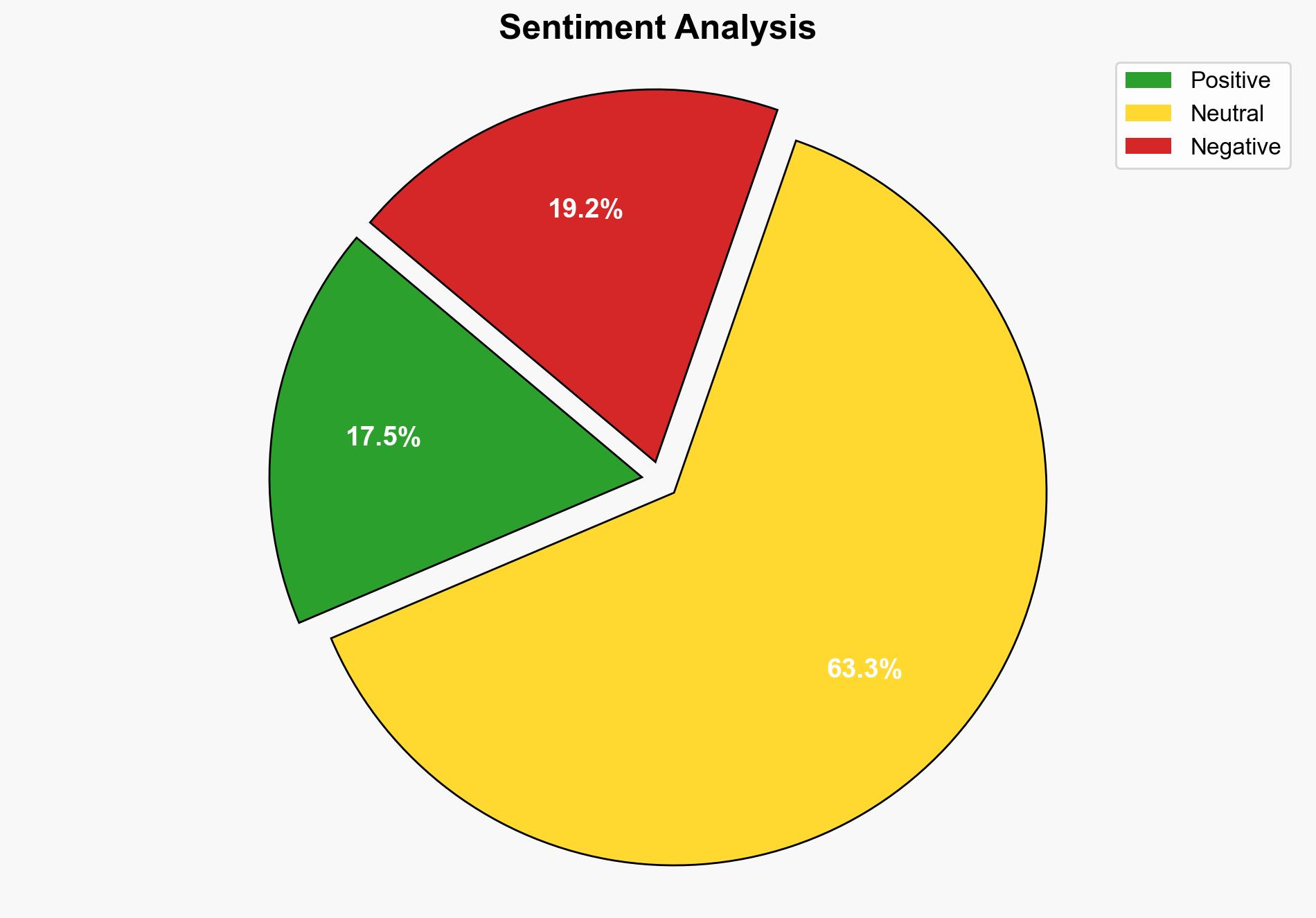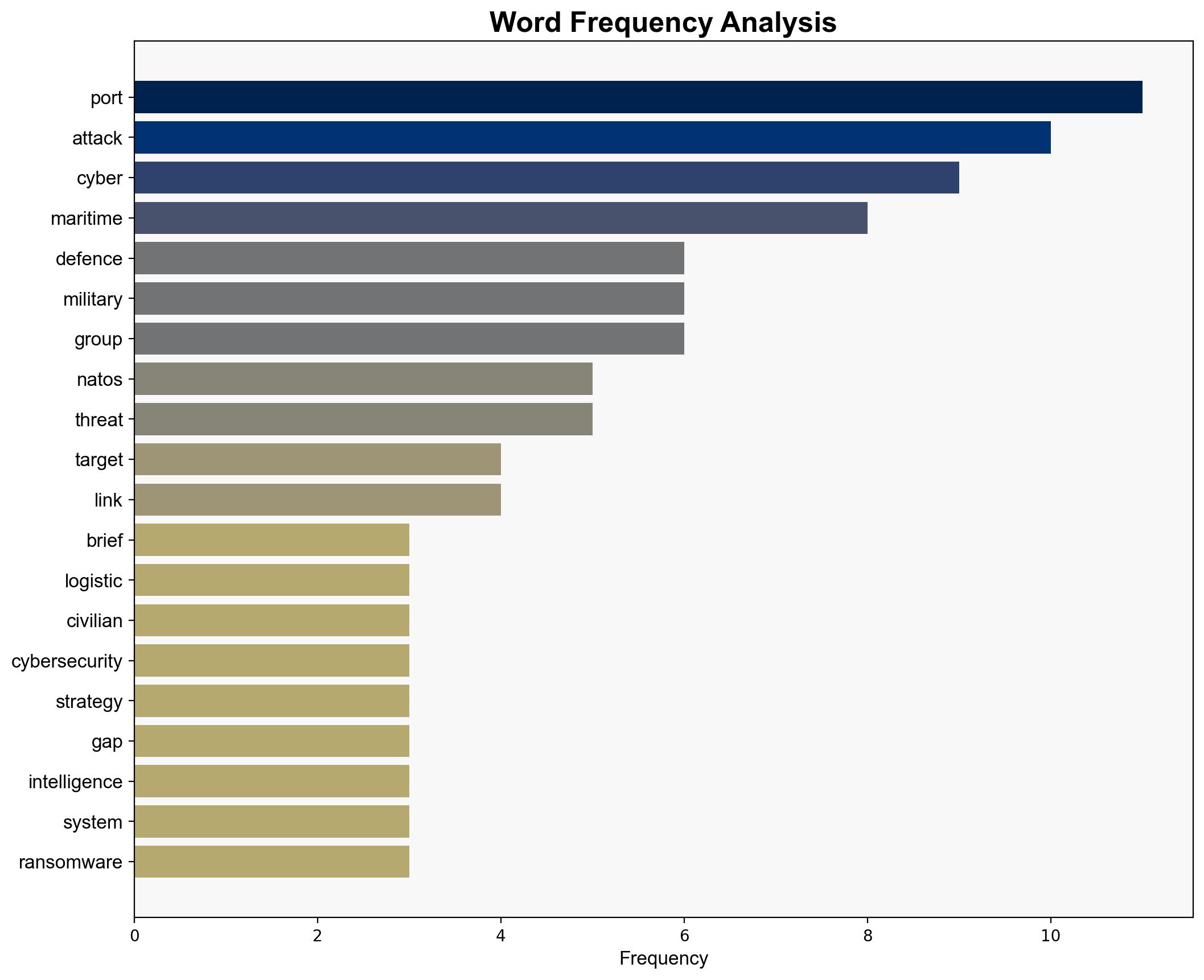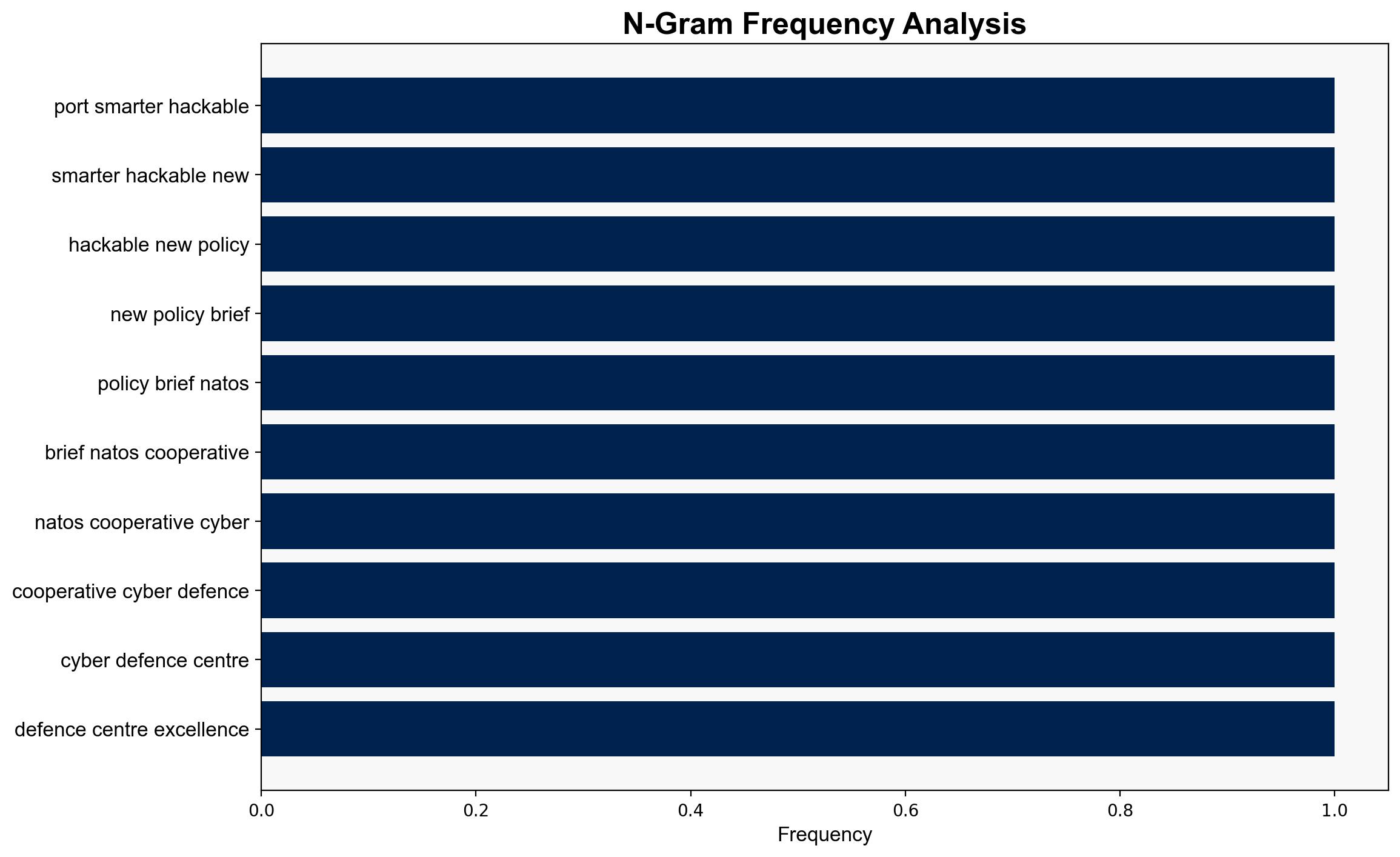Ports are getting smarter and more hackable – Help Net Security
Published on: 2025-07-23
Intelligence Report: Ports are getting smarter and more hackable – Help Net Security
1. BLUF (Bottom Line Up Front)
The increasing digitalization of port infrastructure has made them more vulnerable to cyberattacks, posing significant risks to global trade and national security. Key threat actors include state-sponsored groups from Russia, Iran, and China, as well as financially motivated cybercriminals. Current NATO strategies do not adequately address these cyber threats, necessitating comprehensive updates to maritime cybersecurity protocols.
2. Detailed Analysis
The following structured analytic techniques have been applied to ensure methodological consistency:
Cognitive Bias Stress Test
Potential biases in threat assessments have been identified and addressed through structured challenge methods, ensuring a balanced view of the cyber threat landscape.
Bayesian Scenario Modeling
Probabilistic logic indicates a high likelihood of increased cyberattacks on port infrastructure, with potential for significant economic and operational disruptions.
Network Influence Mapping
Analysis of influence networks highlights the strategic impact of state-sponsored actors and cybercriminal groups on maritime cybersecurity.
3. Implications and Strategic Risks
The integration of operational technology (OT) systems in ports increases vulnerability to cyberattacks, which can lead to widespread disruptions in global supply chains. The lack of coordination between civilian and military cybersecurity efforts exacerbates these risks, potentially impacting national security and economic stability.
4. Recommendations and Outlook
- Update NATO’s maritime strategy to incorporate comprehensive cyber defense measures, including formal coordination mechanisms with commercial port operators.
- Establish structured intelligence-sharing networks tailored to maritime threats, enhancing real-time response capabilities.
- Conduct regular cybersecurity exercises, such as NATO’s Locked Shields, to improve cooperation between military and civilian entities.
- Scenario-based projections suggest that without intervention, cyberattacks on ports will increase in frequency and severity, with potential for significant economic impact.
5. Key Individuals and Entities
Notable groups involved in cyber threats include Fancy Bear, Charming Kitten, Mustang Panda, BlackCat, and Conti. These entities are linked to state-sponsored activities and financially motivated cybercrime.
6. Thematic Tags
national security threats, cybersecurity, counter-terrorism, regional focus





